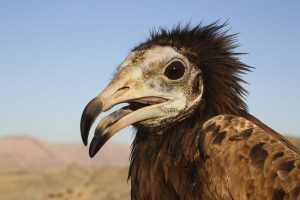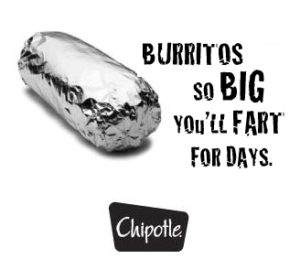John Murphy of MD Linx writes that vultures are nature’s cleanup crew, but their carrion-based meals would cause food poisoning or even death in humans and other animals. Because vultures feed on decomposing carcasses, they encounter a variety of dangerous pathogens, including those that cause anthrax, tuberculosis, brucellosis, and others. They also end up ingesting nasty stuff that goes along with carrion, such as soil-dwelling bacteria, nematodes, fungi, and insects. Yet, vultures don’t get sick from eating this kind of “junk food.”
 What’s in a vulture’s digestive system that enables it to eat dead meat without getting sick?
What’s in a vulture’s digestive system that enables it to eat dead meat without getting sick?
How do vultures survive on this rotten diet? More importantly, what can we learn about their eating habits and hardy digestion that could help us prevent food poisoning and other gastrointestinal problems in humans? Investigators are now trying to find out.
Scientists have a number of hypotheses about how these scavengers avoid sickness with this diet. Researchers led by Daniel T. Blumstein, PhD, professor, Department of Ecology and Evolutionary Biology, University of California Los Angeles (UCLA), Los Angeles, CA, performed a systematic review to investigate some of the proposed behavioral and physiologic defenses.
One of these hypothesized defenses argues the vulture’s bald head is more hygienic than a feathered head. But there’s no evidence to support this idea. Other hypotheses are that vultures prefer to eat fresh carcasses over older ones, and that vultures’ highly acidic stomachs eliminate the majority of pathogens before the most harmful microbes reach the gut.
But perhaps the most convincing hypothesis is that the vulture’s microbiome not only manages digestion, but also helps combat, prevent, and balance the plethora of potential pathogens—some of which may even provide helpful nutrients through digestion.
It’s this hypothesis that has captured the interest of scientists. In 2014, researchers reported findings from the first deep metagenomic analysis of the vulture microbiome. They found, on average, 76 types of microorganisms in the gut. But they found nearly 7 times that many—an average of 528 different types of microorganisms—on the facial skin of vultures.
“Our results show there has been strong adaptation in vultures when it comes to dealing with the toxic bacteria they digest,” said first author Michael Roggenbuck, PhD, then a postdoctoral microbiology researcher, University of Copenhagen, Copenhagen, Denmark. “On one hand, vultures have developed an extremely tough digestive system, which simply acts to destroy the majority of the dangerous bacteria they ingest. On the other hand, vultures also appear to have developed a tolerance towards some of the deadly bacteria—species that would kill other animals actively seem to flourish in the vulture lower intestine.”
(Anyone who is quoted saying ‘on the one hand’ and ‘on the other hand’ has no role trying to communicate about science.)
Vultures need this combination—a robust digestive system plus a high bacterial tolerance—to withstand some of the food challenges they face. For instance, because of the tough hides of some large animals, vultures often take an easier back-door route—through the anus—to get at their meal. This increases the likelihood of ingesting anaerobic fecal bacteria such as clostridia and fusobacteria, noted Dr. Roggenbuck and coauthors.
“These observations raise the question as to whether the clostridia and fusobacteria in the [vulture’s] gut simply outcompete the other bacteria but don’t confer any benefit to the vulture, or in contrast, if their presence actually confers dietary advantages for the vultures,” Dr. Roggenbuck said. “The team’s results suggest that it’s probably a bit of both—while other microorganisms are likely outcompeted by the surviving bacteria, the vultures also receive a steady stream of important nutrients when the bacteria break down the carrion.”

